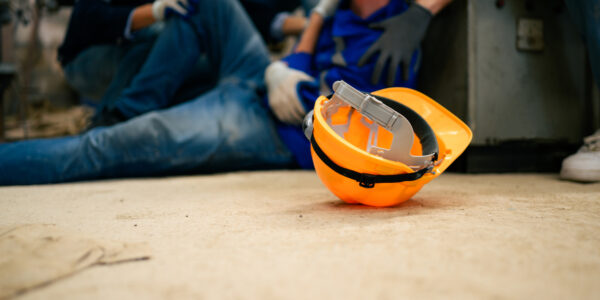The National Institute for Occupational Safety and Health (NIOSH) observes National Safety Month during June. Every month should be a safety month, we’d say, but we have a few fine June days left to think about National Safety Month.
Slips and falls
Slips and falls continue to be some of the most common workplace injuries. Falls are the second most common cause of death from accidental injuries when both home and workplace falls are included. They’re the top cause of injury in construction and third cause of fatal workplace accidents across all industries.
Yet falls are preventable. Here are ten steps that make a difference:
- Keep Walkways Clear: Ensure that all walkways, corridors, and work areas are free from clutter, debris, and obstacles. Encourage employees to promptly report any spills, leaks, or hazards they encounter.
- Maintain Proper Lighting: Well-lit work areas help employees see potential hazards and navigate safely. Regularly inspect and maintain lighting fixtures, replacing any faulty bulbs or fixtures promptly.
- Use Proper Signage: Clearly mark wet floors, uneven surfaces, and areas under maintenance with appropriate warning signs. This helps to alert employees and visitors to potential hazards and encourages caution.
- Install Non-Slip Surfaces: Use non-slip mats or adhesive strips in areas prone to spills, such as entranceways, kitchens, and bathrooms. These surfaces provide better traction and reduce the risk of slips.
- Clean up Spills Promptly: Establish protocols for reporting and addressing spills, leaks, or wet surfaces. Promptly clean up and dry any spills, and use caution signs or barriers until the area is safe.
- Proper Footwear: Encourage employees to wear appropriate footwear with slip-resistant soles. Provide guidelines or recommendations for footwear that offers good traction and support.
- Regular Maintenance: Regularly inspect and maintain flooring surfaces, stairs, handrails, and other structural elements. Repair or replace any damaged or worn-out components promptly.
- Employee Training: Conduct regular training sessions to educate employees about slip and fall hazards, safe walking techniques, and reporting procedures. Encourage them to take personal responsibility for maintaining a safe work environment.
- Ergonomics and Housekeeping: Promote proper ergonomics and housekeeping practices to reduce clutter, minimize tripping hazards, and maintain a clean work area. Encourage employees to organize their workstations and maintain tidy workspaces.
- Safety Culture: Foster a culture of safety where employees feel empowered to identify and address potential hazards. Encourage open communication, provide feedback, and recognize individuals who contribute to maintaining a safe workplace.
Falls are preventable
Certainly, train all workers in the correct use of ladders and scaffolding if these tools are used in your facility. Make sure shoes are non-slip and walkways are clear. But you can also think outside the box.
Tai Chi classes after work to help team members improve their balance, strategic placement of cables, and a company-wide game of making sure drawers stay closed can draw attention to the slip and fall problem and keep employees’ minds on the subject.
